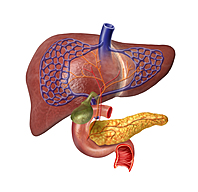Vascularized Intestinal Organoids
TECHNOLOGY NUMBER: 2020-370

OVERVIEW
Improved intestinal organized containing vascular endothelial cells- Better modeling of the in vivo intestine
- Co-culture technique for vascularization while growing organoid
BACKGROUND
Recent advances in our understanding of development have led to the ability to grow organoids in culture. Growing organoids in culture involves the creation of three-dimensional structures derived from stem cells or tissue samples that mimic the structure and function of specific organs. This technique has revolutionized biomedical research, providing scientists with a more physiologically relevant model for studying human development, disease mechanisms, drug responses, and potential therapies.has been done for several organ systems including the intestines. Although these organoids recapitulate much of their in vivo counterparts, it remains difficult to fully model organs outside the body. Intestinal organoid cultures currently lack several components including immune cells, enteric neurons, the microbiome, and sufficient vasculature to mimic real life phenomena.
INNOVATION
Researchers have created a method to enhance co-differentiation and maintenance of an endothelial cell population cultured along with human intestinal organoids. These co-cultured endothelial cells display markers found in intestinal endothelial cells existing in vivo. This technology allows for co-differentiation of intestinal vascular endothelial cells in a human intestinal organoid culture. Although organoid culture has been previously established, those previously cultured tissues did not possess all of the components found in the body. This system therefore facilitates better replication of the in vivo intestine in an in vitro system. These organoids can be used to more accurately study intestinal development and also provide a model system for therapeutic development.